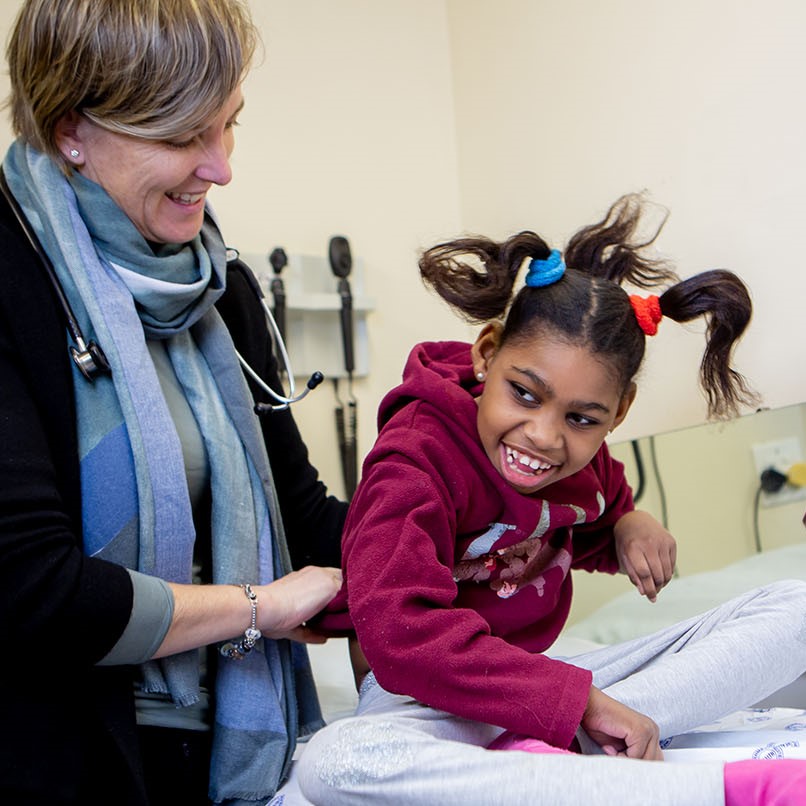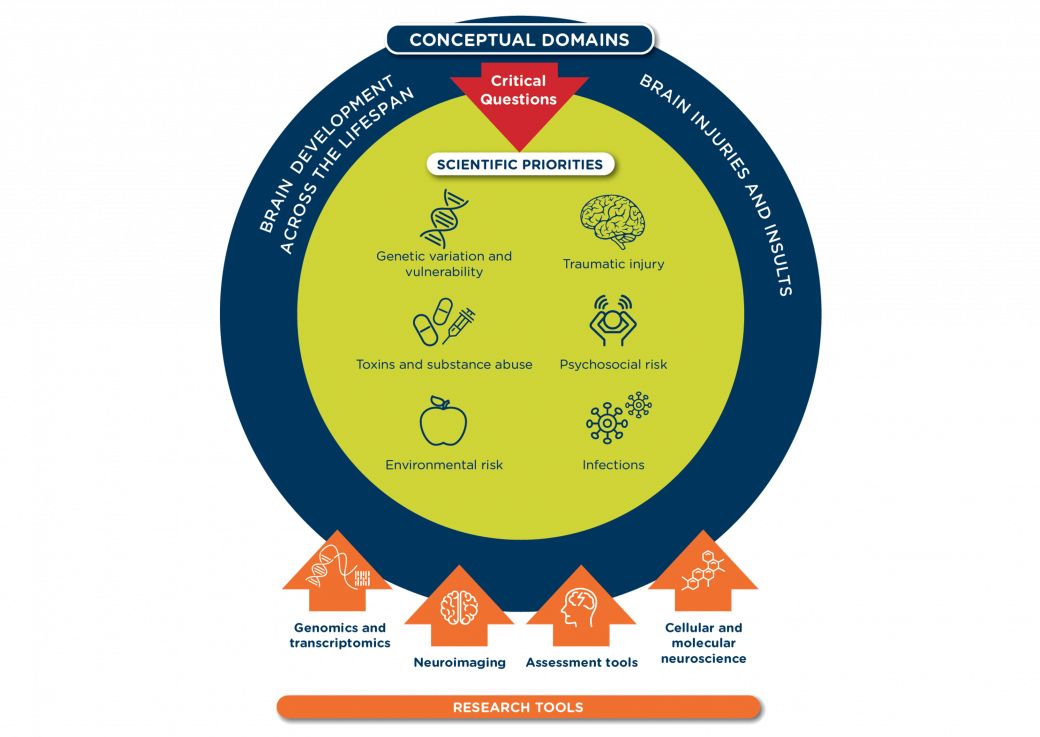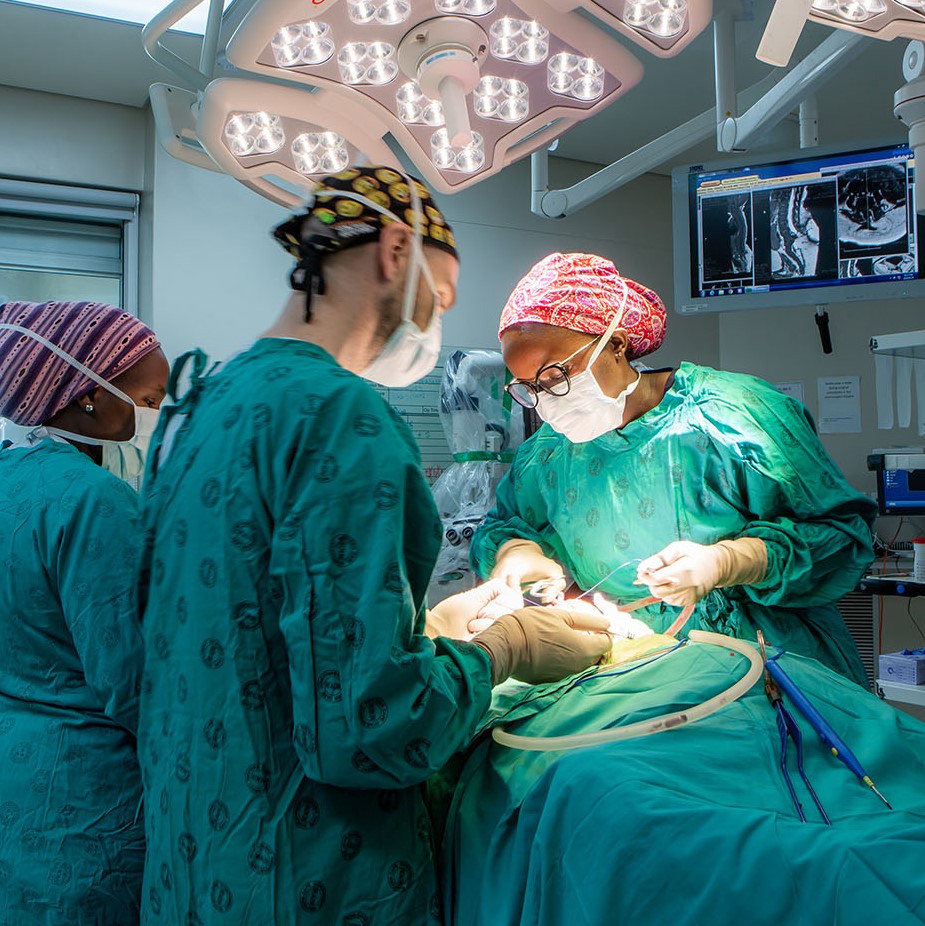|
Jump to: Brain research in Africa · Conceptual domains · Research priorities · Critical questions · Research tools · Integration |

Why brain research in Africa?
Understanding the brain, and finding better treatments for conditions that affect the human brain, are important challenges for the 21st century. Early development of the brain, so critical in enabling people to achieve their full potential, is determined by a range of genetic and environmental factors. In the context of Sub-Saharan Africa, this includes an extraordinary range of risk factors, such as a higher incidence of infections, higher exposure to toxins and poor nutrition, greater exposure to trauma and violence, together with much wider genetic diversity.
This unique context requires us to develop interventions to promote brain health and wellbeing on our continent, and also creates opportunities to make break-through discoveries of relevance to global neuroscience.
A unique and dynamic demography
Sub-Saharan Africa continues to experience accelerating population growth and, as home to 500 million children and adolescents, has a younger population than any other region of the world.
Over the last 30 years, child mortality in Africa has steadily dropped with children increasingly surviving the high-risk early years. However, these gains have also resulted in greater numbers of children living with chronic conditions, including developmental delays.
The early years play a transformative role on future growth and potential, as demonstrated by their prioritisation on development agendas, such as the United Nations SDGs and the World Health Organisation's Nurturing Care Framework.
Burden of disease
The burden of brain insults and injuries for children and young adults in Sub-Saharan Africa may result in a spectrum of cognitive impairment and neurological disability across the lifespan.
This region has the highest global rates of traumatic brain injury that occur through road traffic accidents, falls, and assaults. It is our mission to find relief for this critical public health concern.
Sub-Saharan Africa also remains the epicentre of infectious diseases, HIV and TB (in particular TB meningitis). As with these diseases, emerging global infections, including the novel SARS-CoV-2 virus, frequently behave differently in environments where socio-economic disadvantage and other infectious diseases are prevalent.
Two conceptual domains
We frame our research ecosystem within two conceptual domains, using a range of research tools to address key questions in 6 priority areas.


Brain development across the lifespan
Our work on brain development spans the human lifecycle from foetal development, through childhood, adolescence and into adult life.
We strive to understand the factors influencing brain health and development across this spectrum, and the mechanisms through which biological, pathological and environmental factors impact the brain. Through our research we can make earlier and more accurate diagnoses, develop more effective prevention strategies, and inform interventions to improve brain and mental health outcomes.
Brain injuries and insults
We focus on multiple dimensions of brain injuries and insults, specifically: disease pathogenesis, pathophysiology, neuro-immunology, drug development, neuroimaging, and biomarkers.

We have built sophisticated infrastructure to support our researchers working in the local environment. As a result, NI researchers have gained world-leading clinical experience and an exciting range of programmes:
- We seek to understand the molecular mechanisms of brain injury and the acute and chronic inflammatory responses of the brain to insult.
- We are interested in point-of-care diagnostics in which novel imaging or biomarker methods enable early diagnosis.
- We are also interested in how secondary mechanisms of injury cause progressive brain damage, and how neuro-critical care and multimodality brain monitoring can mitigate these to provide individualised patient care.
Research priorities
-
Genetic variation
Africa has by far the greatest genetic diversity of all continents, and consequently wide variation in people’s responses and vulnerability to injuries and insults to the brain. This ranges from timing of onset through to severity of phenotype and finding the genetic drivers of these developmental, psychiatric and cognitive trajectories in Africa may provide answers that can be applied worldwide.
-
Infections
HIV is a highly neurotropic virus and TB, in particular TB meningitis, causes significant neurological disability. With Sub-Saharan Africa being the global epicentre of these infectious diseases, our long-term goal is prevention which requires us to understand their mechanisms, develop screening approaches and devise interventions to reduce their impact.
-
Traumatic brain injury
Trauma, due to road traffic accidents, falls, and assaults, is the leading cause of death and neurological disability in Sub-Saharan Africa, with rates higher than any other region of the world. Understanding the cascade of neurological mechanisms that follow traumatic injury may allow us to prevent further damage (secondary prevention) and improve outcomes.
-
Toxins and substance abuse
Sub-Saharan Africa has high foetal exposure to environmental toxins including substances such as alcohol, methamphetamine and nicotine. Understanding how these exposures affect brain development may direct prevention strategies and inform better policies to reduce substance abuse.
-
Environmental risks
Understanding the effects of malnutrition and micronutrient deficiencies on brain development across the lifespan is critical in guiding effective intervention strategies. This work is particularly pertinent at present given how the already-high levels of these risks have been exacerbated by COVID-19 lockdowns across Sub-Saharan Africa.
-
Psychosocial risks
Poverty and unemployment, intensified by the COVID pandemic, have heightened exposure to violence and increased the prevalence of associated psychosocial risks, such as depression, anxiety, injury and post-traumatic stress disorder (PTSD). It is vital to explore safe and effective mediations and behaviour strategies, as well as to finding a balance between the imperative to intervene and the need to develop a trusting relationship that will enable affected individuals to share sensitive information about their lives.
Exploring critical questions
We are particularly interested in directing researchers within the NI network to explore critical questions that reflect our focus on the needs of African populations, through our pathway to research impact, mindful of our fundamental concern with conducting ethical research. In our Research Strategy we provide examples of how we can address the challenges outlined above through a range of relevant questions.
Research tools
-
Assessment tools
Our researchers address fundamental questions by longitudinally mapping brain development and cognitive growth across the lifespan. Mental health, cognitive impairment and psychosocial risk assessment requires screening tools to be designed for resource-poor clinical settings. Our investigators validate and implement traditional neuropsychological and neurocognitive assessments to determine whether existing measures of development and cognition are valid across African settings, and how they can be better adapted. This includes developing low-cost, open-access technology for measuring brain development.
-
Molecular and cellular neuroscience
Our neuroscience projects are run in laboratories affiliated with the NI. With access to a host of clinical specimens that are rarely available elsewhere, these laboratories facilitate key areas of research including biomarker discovery, molecular biology and cell culture work, and drug research and discovery. Our basic neuroscience laboratories are equipped with a wide range of state-of-the-art technologies that allow our researchers to interrogate brain slice, and dermal and neuronal cell cultures using various techniques, including: patch-clamp electrophysiology and local field potential recordings in vitro optogenetics fluorescence microscopy including Ca2+ imaging in vivo EEG wireless telemetry organotypic hippocampal slice cultures computational and theoretical modelling
-
Genomics and transcriptomics
Africa has the highest genetic diversity in the world, with genetic variation affecting vulnerability to brain injury and insult. Identifying the genetic drivers of brain development in Africa may provide answers with worldwide application. We use the latest next-generation sequencing technologies to interrogate DNA and gene expression profiles from cell culture models to clinical biospecimens. These methodologies include the latest genome-wide analysis techniques, including whole genome sequencing, bulk RNA- sequencing, single cell RNA-sequencing, and ATAC-sequencing.
-
Neuroimaging
The Cape Universities Body Imaging Centre (CUBIC), situated adjacent to the NI, is a joint initiative between Siemens, Stellenbosch University, the University of Cape Town and the South African Medical Research Council. The core focus of CUBIC is collaborative imaging research, and technical support is provided by the Imaging Science research group based in the NI. CUBIC houses state-of-the-art, large-bore Siemens 3T Skyra MRI and Biograph mCT Flow 64 PET-CT scanners. CUBIC has network facilities, consultation rooms and common working areas, and in the PET-CT suite are injection rooms, a cooling room and a hot lab. Three MR physicists, three MR radiographers, two nuclear medicine radiographers and a nuclear medicine physician provide technical and expert services.
Integration of research disciplines with research programmes
Innovative science is grounded in foundational disciplines, with collaboration across groups and between expertise. This is reflected in the NI’s organisational structure, which includes groupings from across the Health Sciences Faculty, and beyond.

